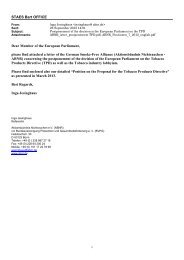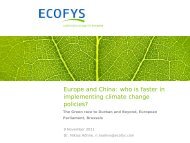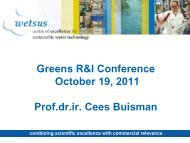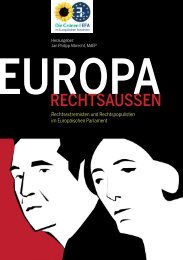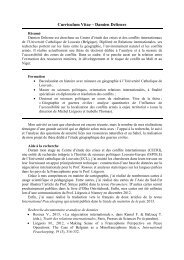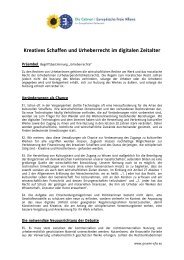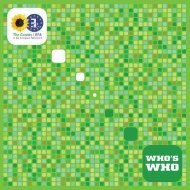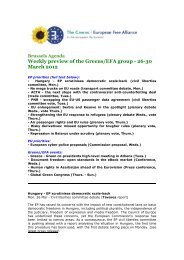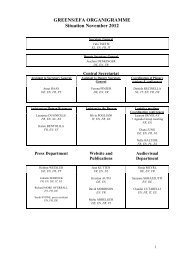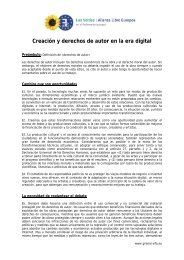Agro-Biotechnology: - The Greens | European Free Alliance
Agro-Biotechnology: - The Greens | European Free Alliance
Agro-Biotechnology: - The Greens | European Free Alliance
You also want an ePaper? Increase the reach of your titles
YUMPU automatically turns print PDFs into web optimized ePapers that Google loves.
40 | Cloned farm animals - a ‚killing application‘? | Framing legislation<br />
cal procedure with SCNT might impose further market bans related to products<br />
derived by a new or altered technical method. Thus market measures<br />
based on the precautionary principle should be taken to apply for a longer<br />
period of time, taking into account the complexity of scientific questions.<br />
6.2.2.2 Should cloned animals be considered as genetically<br />
modified?<br />
A relevant question in the context of international trade is whether genetic<br />
material from cloned farm animals should be defined as genetically modified<br />
as specified in Directive 2001/18. While EGE (2008), for example, is of<br />
the opinion that this legislation cannot in general apply with cloned animals,<br />
other scientific opinions might be justified. Arguments can be based on recent<br />
understanding of biomolecular mechanisms. <strong>The</strong> process of SCNT interferes<br />
with epigenetic mechanisms on several levels of the genome. This can be seen<br />
as technically induced modification of the genome regulation. Furthermore, the<br />
combination of mitochondrial DNA of the donor animal with the mitochondrial<br />
DNA of an oocyte from another animal can be seen as technical modification of<br />
the animals' DNA. Edwards et al. (2003) warn of effects of mismatching nuclear<br />
and mitochondrial genes.<br />
<strong>The</strong> notion that some genetic modification is caused by the process of cloning<br />
cannot in general be dismissed. As EGE (2008) clearly points out, a clone is not<br />
a copy. Since most of the differences between the original animal and its clone<br />
are caused by the SCNT procedure, clones can be defined as animals with<br />
non-targeted, technically derived genetic modifications. Gunning et al. (2006)<br />
summarize some open questions concerning the issue of genetic modification:<br />
“However, it is also necessary to consider whether SCNT in itself involves genetic<br />
modification. If that is the case, all SCNT-cloned animals will fall under<br />
the scope of the GMO regulation. In connection with Article 2(2) in Directive<br />
2001/18 there is disagreement among the scientific experts as to whether the<br />
use of SCNT in itself involves 'alteration' of genetic material.”<br />
Gunning et al. (2006) discuss several options in relation to the definition of the<br />
EU Directive 2001/18:<br />
“If non-transgenic clones were included, it would need to be decided whether<br />
they fell into the definition under Annex IA(2), because the nuclear DNA,<br />
which is heritable material, is prepared outside the organism (if an egg can be<br />
called that) and is introduced by micro-injection. It might also fall under the<br />
definition given in Annex IA(3). While SCNT does not form new combinations<br />
of genetic material through the fusion of two cells, nuclear DNA from a somatic<br />
cell forms a new association with the mitochondrial DNA in the enucleated<br />
egg cell in which it is placed. Both types of DNA are heritable, and the method



